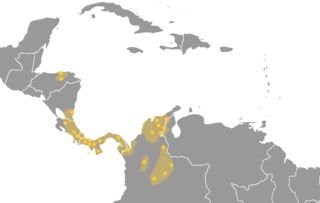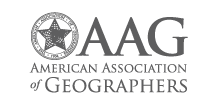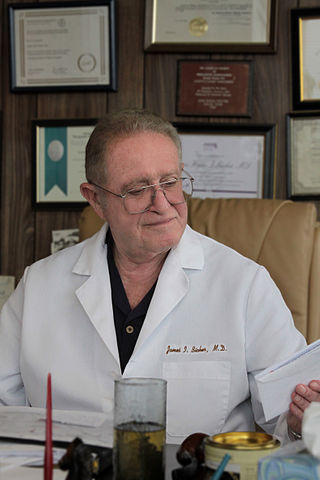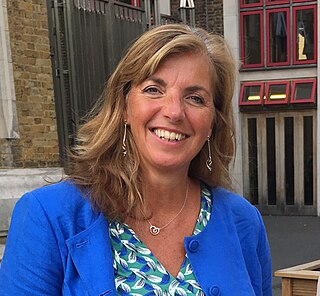Related Research Articles

Hemoglobin, is the iron-containing oxygen-transport protein present in red blood cells (erythrocytes) of almost all vertebrates as well as the tissues of some invertebrate animals. Hemoglobin in blood carries oxygen from the respiratory organs to the other tissues of the body, where it releases the oxygen to enable aerobic respiration which powers the animal's metabolism. A healthy human has 12 to 20 grams of hemoglobin in every 100 mL of blood. Hemoglobin is a metalloprotein and chromoprotein.

The American Association for the Advancement of Science (AAAS) is an American international non-profit organization with the stated goals of promoting cooperation among scientists, defending scientific freedom, encouraging scientific responsibility, and supporting scientific education and science outreach for the betterment of all humanity. AAAS was the first permanent organization to promote science and engineering nationally and to represent the interests of American researchers from across all scientific fields. It is the world's largest general scientific society, with over 120,000 members, and is the publisher of the well-known scientific journal Science.
Dorte Juul Jensen is a senior scientist and head of the Center for Fundamental Research: Metal Structures in Four Dimensions and Materials Research Division, Risø DTU National Laboratory for Sustainable Energy, Roskilde, Denmark. Risø operates under the auspices of the Danish Ministry of Science, Technology and Innovation, researching a wide range of technologies and training Ph.D candidates in the sciences.
Springer Science+Business Media, commonly known as Springer, is a German multinational publishing company of books, e-books and peer-reviewed journals in science, humanities, technical and medical (STM) publishing.
Wolters Kluwer N.V. is a Dutch information services company. The company is headquartered in Alphen aan den Rijn, Netherlands (Global) and Philadelphia, United States (corporate). Wolters Kluwer in its current form was founded in 1987 with a merger between Kluwer Publishers and Wolters Samsom. The company serves legal, business, tax, accounting, finance, audit, risk, compliance, and healthcare markets. It operates in over 150 countries.

The Intermediate Area is an archaeological geographical area of the Americas that was defined in its clearest form by Gordon R. Willey in his 1971 book An Introduction to American Archaeology, Vol. 2: South America. It comprises the geographical region between Mesoamerica to the north and the Central Andes to the south, including portions of Honduras and Nicaragua and most of the territory of the republics of Costa Rica, Panama and Colombia. As an archaeological concept, the Intermediate Area has always been somewhat poorly defined.

Atmospheric dispersion modeling is the mathematical simulation of how air pollutants disperse in the ambient atmosphere. It is performed with computer programs that include algorithms to solve the mathematical equations that govern the pollutant dispersion. The dispersion models are used to estimate the downwind ambient concentration of air pollutants or toxins emitted from sources such as industrial plants, vehicular traffic or accidental chemical releases. They can also be used to predict future concentrations under specific scenarios. Therefore, they are the dominant type of model used in air quality policy making. They are most useful for pollutants that are dispersed over large distances and that may react in the atmosphere. For pollutants that have a very high spatio-temporal variability and for epidemiological studies statistical land-use regression models are also used.

Hirotsugu Akaike was a Japanese statistician. In the early 1970s, he formulated the Akaike information criterion (AIC). AIC is now widely used for model selection, which is commonly the most difficult aspect of statistical inference; additionally, AIC is the basis of a paradigm for the foundations of statistics. Akaike also made major contributions to the study of time series. As well, he had a large role in the general development of statistics in Japan.

Britton "Brit" Chance was an American biochemist, biophysicist, scholar, and inventor whose work helped develop spectroscopy as a way to diagnose medical problems. He was "a world leader in transforming theoretical science into useful biomedical and clinical applications" and is considered "the founder of the biomedical photonics." He received the National Medal of Science in 1974.

The American Association of Geographers (AAG) is a non-profit scientific and educational society aimed at advancing the understanding, study, and importance of geography and related fields. Its headquarters is located in Washington, D.C. The organization was founded on December 29, 1904, in Philadelphia, as the Association of American Geographers, with the American Society of Professional Geographers later amalgamating into it in December 1948 in Madison, Wisconsin. As of 2020, the association has more than 10,000 members, from nearly 100 countries. AAG members are geographers and related professionals who work in the public, private, and academic sectors.
Sung-Mo “Steve” Kang is an electrical engineering scientist, professor, author, inventor, entrepreneur and 15th president of KAIST. Kang was appointed as the second chancellor of the University of California, Merced in 2007. He was the first department head of foreign origin at the electrical and computer engineering department at the University of Illinois at Urbana-Champaign. Dr. Kang teaches and has written extensively in the field of computer-aided design for electronic circuits and systems; he is recognized and respected worldwide for his outstanding research contributions. Dr. Kang has led the development of the world’s first 32-bit microprocessor chips as a technical supervisor at AT&T Bell Laboratories and designed satellite-based private communication networks as a member of technical staff. Dr. Kang holds 15 U.S. patents and has won numerous awards for his ground breaking achievements in the field of electrical engineering.
Jennifer M. Wilby is an American and UK management scientist, and past director of the Centre for Systems Studies, and a senior lecturer and researcher in management systems and sciences in The Business School, University of Hull. She served as president of the International Society for the Systems Sciences for the term 2010–2011.
Duane Frederick Bruley is an American researcher, entrepreneur, and academician.
Melvin Henry Knisely was an American physiologist who first observed the pathological clumping of red and white cells, in vivo, at the capillary level. One of the most cited Knisely works was his research which documented the fact that even one alcoholic drink kills brain cells, which are irreplaceable.

James Haim I. Bicher is an American radiation oncologist. He was born in San Cristóbal, Santa Fe, Argentina and is a pioneer in the clinical use of hyperthermia combined with low dose (protracted) radiation therapy (thermoradiotherapy). He is a founder and past president of ISOTT, North American Hyperthermia Group, and the American Society of Clinical Hyperthermic Oncology. Bicher was a student of Bernardo Alberto Houssay, and one of the contributors to the basic principles that allowed later development of Plavix.
The European Underwater and Baromedical Society (EUBS) is a primary source of information for diving and hyperbaric medicine physiology worldwide. The organization was initially formed as the European Underwater and Biomedical Society in 1971 and was an affiliate of the Undersea Medical Society for several years. Its purpose is promoting the advancement of diving and hyperbaric medicine and the education of those involved in the field; EUBS provides a forum and a journal for exchange of information and promotes research into diving medicine.
James S. Hyde was an American biophysicist. He held the James S. Hyde chair in Biophysics at the Medical College of Wisconsin (MCW) where he specialized in magnetic resonance instrumentation and methodology development in two distinct areas: electron paramagnetic resonance (EPR) spectroscopy and magnetic resonance imaging (MRI). He is senior author of the widely cited 1995 paper by B.B. Biswal et al. reporting the discovery of resting state functional connectivity (fcMRI) in the human brain. He also served as Director of the National Biomedical EPR Center, a Research Resource supported by the National Institutes of Health. He was author of more than 400 peer-reviewed papers and review articles and held 35 U.S. Patents. He was recognized by Festschrifts in both EPR and fcMRI.
Sandra Eaton is an American chemist and professor at the University of Denver, known for her work on electron paramagnetic resonance.

Michael L. Hess was an American professor of cardiology and physiology at the Medical College of Virginia (MCV) who was instrumental in founding the International Society for Heart and Lung Transplantation (ISHLT), of which he served as its first president.

Clare Elwell is a British academic who is a professor of medical physics and director of the Near Infrared Spectroscopy Group and Biomedical Optics Research Laboratory at University College London. She has served as president of the International Society on Oxygen Transport to Tissue and the Society for Functional Near Infrared Spectroscopy.
References
- ↑ About ISOTT Archived 2008-10-20 at the Wayback Machine from the Official ISOTT Web Site
- ↑ Bruley, DF (1998). "The genesis of ISOTT. International Society on Oxygen Transport to Tissue". Adv Exp Med Biol. 454: 1–6. doi:10.1007/978-1-4615-4863-8_1. PMID 9889870.
- ↑ University of Louisville, Dr. Duane F. Bruley Archived 2014-01-12 at the Wayback Machine
- ↑ Oxygen transport to tissue XXIX, Volume 614 By Kyung A. Kang, David Keith Harrison, Duane F. Bruley